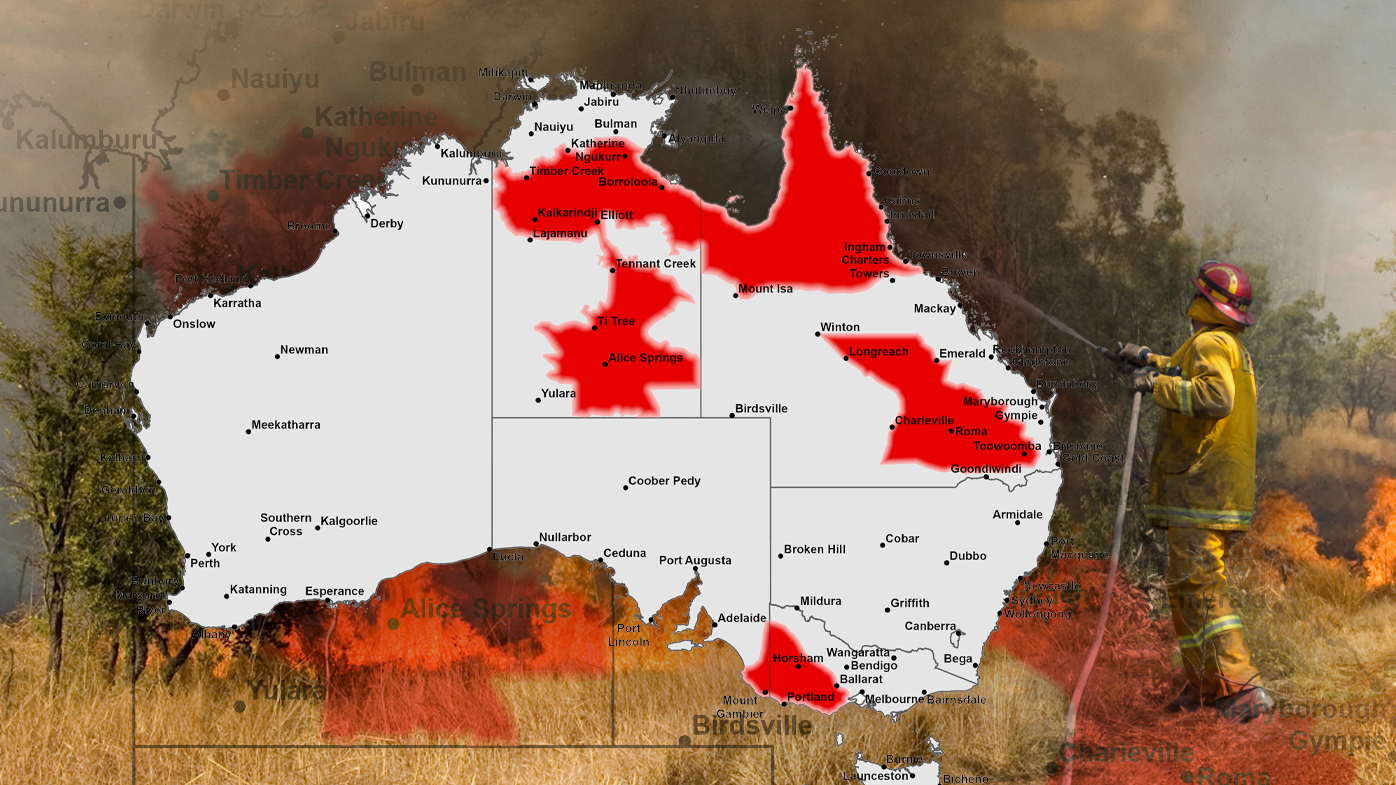
It’s been a warm and windy start to spring, and it means some parts of the country face increased bushfire risk in the coming weeks.
The National Council for Fire and Emergency Services released its Seasonal Bushfire Outlook report for spring today, and it warns that some parts of the country should be on alert as the weather heats up.
Large areas of Queensland, the Northern Territory and western parts of Victoria are especially at a higher risk of bushfires this spring.
READ MORE: Deadly virus rears its head in Antarctica – and it’s bad news for Australia
This spring, there is an increased chance of unusually high maximum temperatures across most of Australia.
We just had the warmest August on record, according to the report, and these above average temperatures are set to continue.
Grass and vegetation levels are also high in many parts of the country, which can pose a fire risk as they dry out in
There is an increased chance of higher rainfall for NSW, Queensland, Tasmania and southeast South Australia, but communities have still been urged to start preparing for fires as summer rolls around.
Here’s what each state and territory can expect.
NSW and ACT
NSW and the ACT are predicted to have normal fire danger this spring.
Higher than average rainfall over the winter prevented a lot of the usual prescribed burning, and there is a lot of wet weather predicted ahead.
In many areas of NSW, especially the north, grass fuel loads are high thanks to favourable growing conditions.
The high grass fuel loads could dry out later in the spring, posing significant risk for fast moving, intense grass fires.
While the fire risk this spring is mainly around grassland areas, bushland that was burnt during the Black Summer fires have recovered to a point where they could sustain dangerous fires again.
READ MORE: Court hears bombshell claim of Sky News host’s help for Higgins
Queensland
Queensland is at a higher risk of grassfires in coming months.
Intense winds and morning frosts have dried out the grasslands and open forested regions, especially in central and southern Queensland.
The Cape York and Peninsula Areas and nearby Tropical Coast are likely to see a return to a dry seasonal conditions, which will bring an increase in fire activity.
Like NSW, conditions over winter have been ideal for vegetation to grow, giving potential fires plenty of fuel.
Victoria
After a noticeably dry autumn and winter, western Victoria is also at an increased risk of fire.
Southwestern parts of Victoria, from the Wimmera region and Grampians National Park into the Mallee country are especially at risk.
“The current level of landscape dryness in these areas is strong enough that without significant rainfall over the spring period, the flammability of fuels in forests and woodlands will remain high,” the report said.
The report warned that the bushfire season is highly likely to begin early in those areas.
Across Victoria’s north and east, the risk of fire is assessed to be normal.
Northern Territory
There is an increased risk of fire in the Alice Springs, Barkly, and Savanna regions.
Vegetation is drying quickly, with fires carrying overnight.
Across the territory, higher temperatures and short periods of strong, gusty wind are predicted for spring.
Western Australia
Western Australia is predicted to have normal fire risk conditions.
In the southern parts of the state, forecast spring rainfall will keep moisture in the soil, bringing the fire risk down.
South Australia
Low rainfall and high temperatures are predicted to contribute to increased risk of fire.
Vegetation is expected to dry or “cure” faster than usual during spring.
The far west, southeast and mid-west of the state are at higher fire risk.
READ MORE: Coles unveils major rebrand for its bottle shops
Tasmania
Despite some cold winter days, Tasmania has experienced higher than usual temperatures recently.
The state has a normal bushfire risk predicted this spring, though this is predicted to increase towards summer.
Fuel levels remain high, and the Tasmanian community has been told to prepare for the bushfire season.
links to content on ABC
9News





